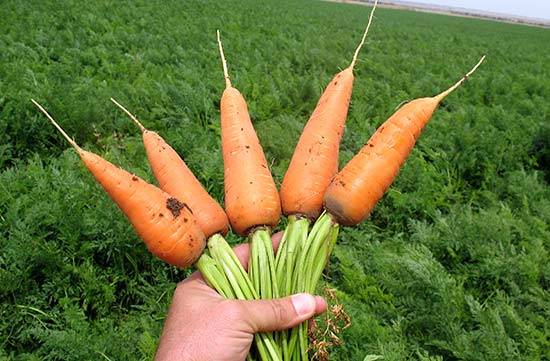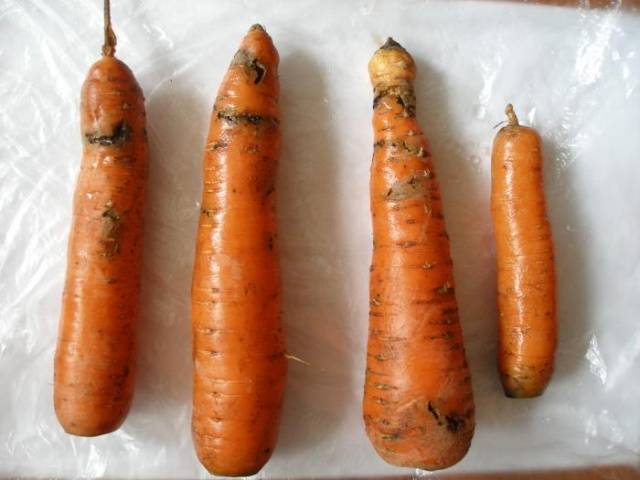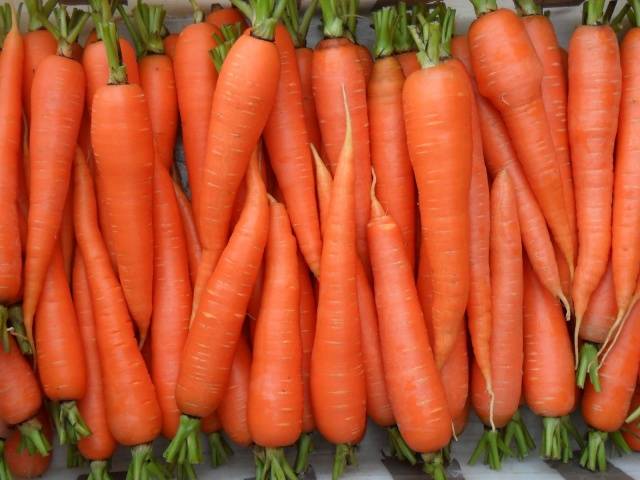Content
This article will be useful for summer residents, as well as those housewives who choose carrots for long-term winter storage in their own cellars. It turns out that not all varieties and hybrids are suitable for long-term storage. What methods are not used today to preserve the harvest for as long as possible! This includes storage in sawdust, putting together special boxes, disinfection, and drying carrots in the sun. All this is wrong and will not bring the desired result. Let's consider both carrot varieties for long-term storage and the conditions under which the crop will remain intact until the end of February.
Storing carrots in winter
There are varieties of carrots created specifically to preserve them longer. This parameter is called keeping quality by farmers. It is indicated on the packaging if carrots keep well. However, keeping quality alone is not enough. In this matter, there are several parameters according to which anyone who wants to preserve carrots longer must act. You will have to take into account:
- characteristics of the variety;
- storage rules;
- harvest date;
- weather in summer;
- ripeness of carrots.
Before we move on to discussing varieties that are ideal for this, let’s talk about storage rules.
You cannot put the entire crop into storage without first sorting it out. There may be only one carrot among them, but it will spoil all the root vegetables, gradually infecting them. Carrots cannot be dried in the sun; they are dried in the shade. The storage must also be cold. Optimal conditions:
- +2-4 degrees Celsius;
- humidity within 95%.
Root vegetables can be stored under certain conditions for varying amounts of time. The table below demonstrates this well.
Storage conditions | Shelf life |
|---|---|
Vegetable compartment of the refrigerator | From 1 to 3 months depending on the variety |
Plastic containers, including bags | Up to 5 months |
Boxes with sand or sawdust | Up to 6 months |
In a chalk or clay “shirt” | Up to 12 months |
Varieties for long-term storage
If you need a variety that will be stored for a long time, it is important to choose it correctly. It's not as difficult as it might seem at first glance. The best varieties of carrots for winter storage are united by common parameters. They need to pay special attention:
- ripening period;
- harvest date;
- the size of a carrot.
Do not forget that the keeping quality of a variety alone is not enough; how carrots will be stored is influenced by a combination of factors. For example, in cold summers, a late-ripening variety with excellent shelf life characteristics will not be stored for long, since it will not accumulate all the useful substances. Carrot varieties for winter storage are presented below:
- "Forto";
- "Valeria";
- "Vita Longa";
- "Moscow winter";
- "Berlicum";
- "Nuance";
- "Queen of Autumn";
- "Carlena";
- "Flaccoro";
- "Samson";
- "Chantaney."
If you need to choose carrot varieties for long-term storage, you need to pay attention to late-ripening and mid-ripening ones, but not to early ones.
Let's combine all the varieties listed above into a table and compare them according to a number of parameters.
Comparative table of varieties
Some of the best varieties are collected here, which will really keep well all winter, if the summer is warm enough, the growing and storage conditions are met, and the harvest is carefully selected.
Name of variety/hybrid | Maturation speed | Description of root vegetables | Growing season in days | Keeping quality, in months |
|---|---|---|---|---|
Berlicum | Late ripening | Cylindrical fruits of orange color with a high content of carotene | 150 | At least six or seven |
Valeria | Late ripening | Tender, large, conical carrots | 110-135 | Six |
Vita Longa | Mid-season | Conical-shaped large root vegetables up to 30 centimeters, evenly colored, dense and tasty | 101-115 | Five six |
Carlena | Late ripening | Small juicy carrots with a large core and also crispy | 150 | Six seven |
Queen of Autumn | Late ripening | Small, juicy and crispy, taste very sweet | 117-130 | Six on average |
Moscow winter | Mid-season | The medium conical shape is not very sweet, but juicy | 67-98 | Three four |
Nuance | Late ripening | About 20 centimeters long, orange, cylindrical and very sweet | 112-116 | About seven |
Samson | Mid-late | Quite large, red-orange in color, 22 centimeters long, small core | 108-112 | About five |
Flaccoro | Late ripening | Long, large with a delicate taste; conical shape with high carotene content | 120-140 | No more than seven |
Forto | Late ripening | Large cylindrical carrots with a blunt tip and high taste | 108-130 | Six seven |
Shantanay | Mid-late | Sometimes it ripens very large, but of medium length (12-16 cm), the flesh is dense and sweet | 120-150 | No more than four |
Please note that most of the presented varieties are resistant to major diseases. It is this factor that sometimes determines the duration of storage in late-ripening and mid-ripening varieties.
It is also worth paying attention to resistance to:
- frosts and low temperatures (carrot varieties “Queen of Autumn”, “Moscow Winter”);
- floweriness (“Valeria”, “Moscow Winter”);
- cracking (“Vita Longa”, “Flaccoro”, “Chantane”).
The best varieties of carrots for winter storage are chosen in winter, and the selection is made carefully. Gardeners should not forget that it is important not only to buy good seed, but also to properly grow carrots in their own beds. The selection process is described in great detail in the video below:
The process of growing root crops depends on how well the soil is prepared, the time of sowing the crop and how well the care is taken. Below we will present reviews from gardeners about carrot varieties, where the features of cultivation will be described.
We should also not forget that carrots most often spoil during storage when the root crops are affected by various diseases. The farmers have foreseen this too. There are varieties that are protected from such diseases. Let's talk about this problem in more detail.
Carrot storage diseases
Root crops may be damaged during storage:
- viruses;
- bacteria;
- fungus.
Regardless of the region where carrots are grown and stored, they can be affected by black, gray and white rot, as well as Phoma (popularly known as brown dry rot). The photo below shows the affected carrots.
During the entire period of growing carrots, the gardener has to deal with pests. In the process of storage, worries and troubles do not become less. One way to avoid this is to choose a variety that is resistant to one of the blights. The table below shows varieties that are resistant to various diseases.
Disease | Resistant varieties and hybrids |
|---|---|
Gray rot, caused by the fungus Botrytis cinerea | no sustainable |
Phoma (brown rot), caused by Phoma destructiva | Moscow winter, Nantes 4, hybrid Bilbo |
White rot caused by Sclerotinia sclerotiorum | Vitamin, Grenada |
Black rot (Alternaria blight), caused by Alternaria radicina M | Shantane, Nantes 4, Vita Longa, hybrid Champion, NIIOH 336 |
Additionally, they carefully select the crop and adhere to storage conditions. In the cellar or another place where root vegetables will lie, it is necessary to maintain a constant temperature and a high level of humidity. Temperature fluctuations are the first reason carrots are damaged by fungi and diseases.
Reviews from summer residents
We have collected reviews from gardeners and summer residents about varieties that are grown not for processing, but specifically for long-term storage.
Conclusion
Choosing varieties that will grow well and be stored for a long time is not so difficult. Pay special attention to late varieties and mid-season disease-resistant carrots.

















